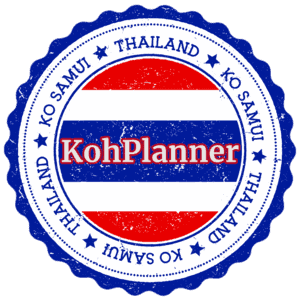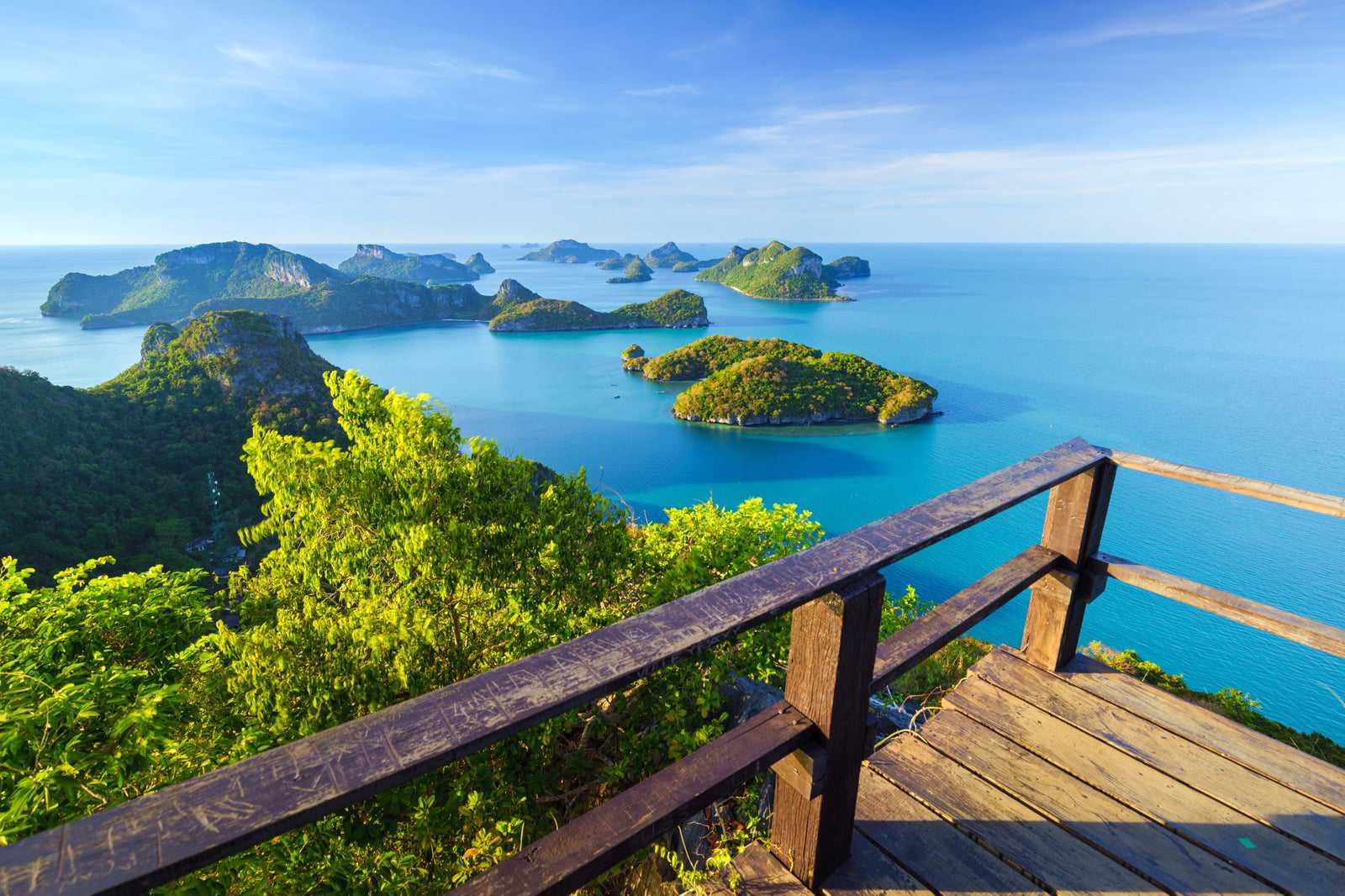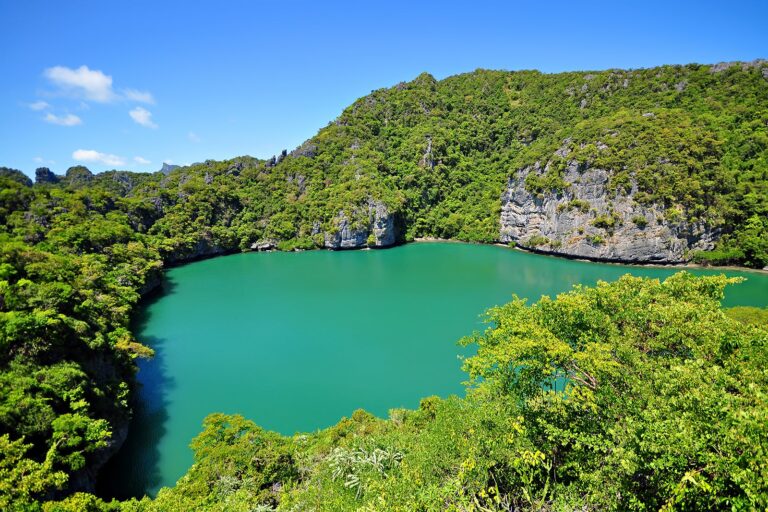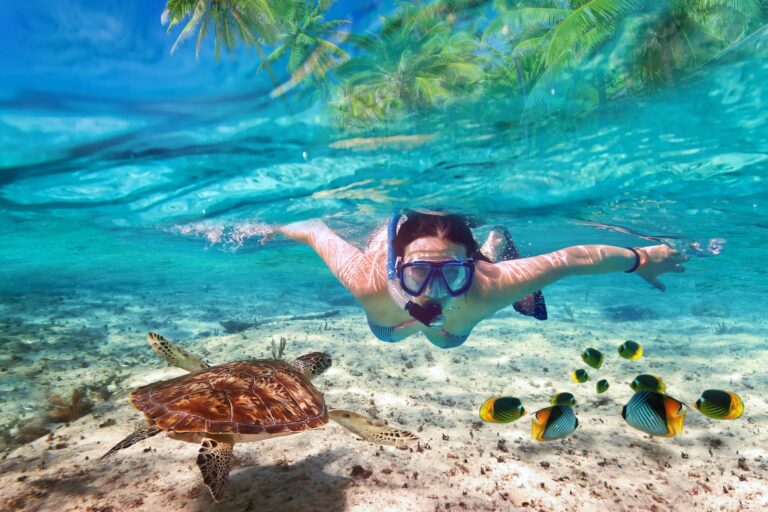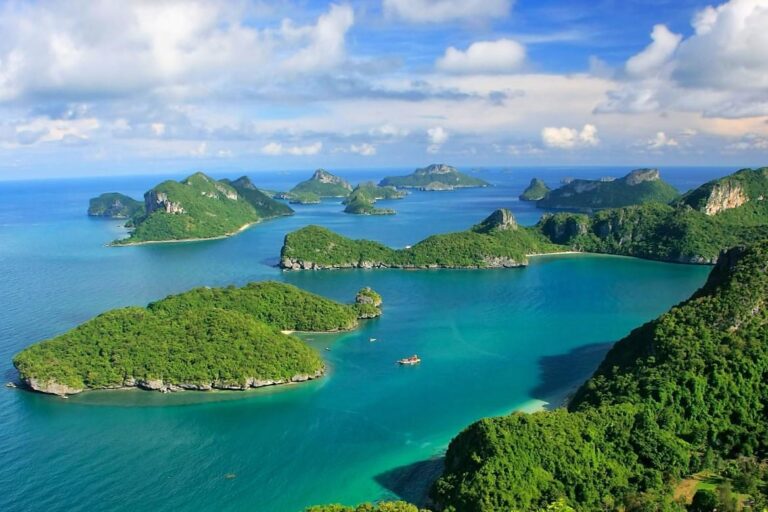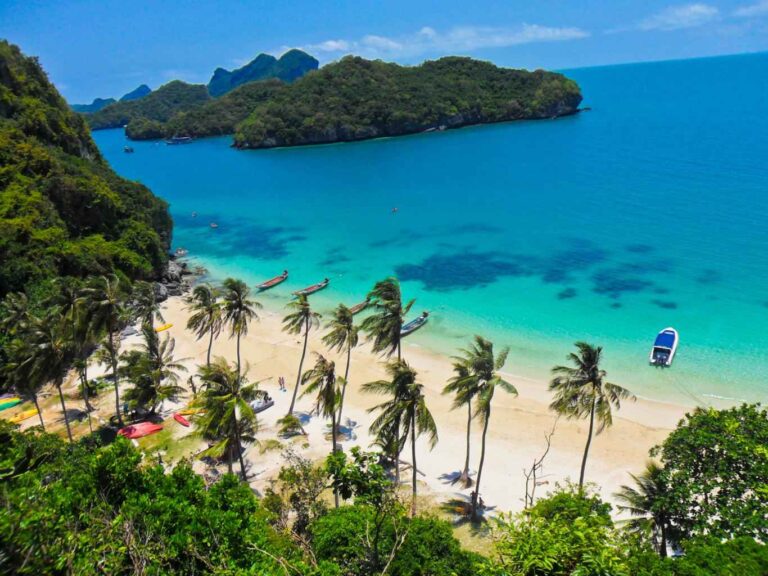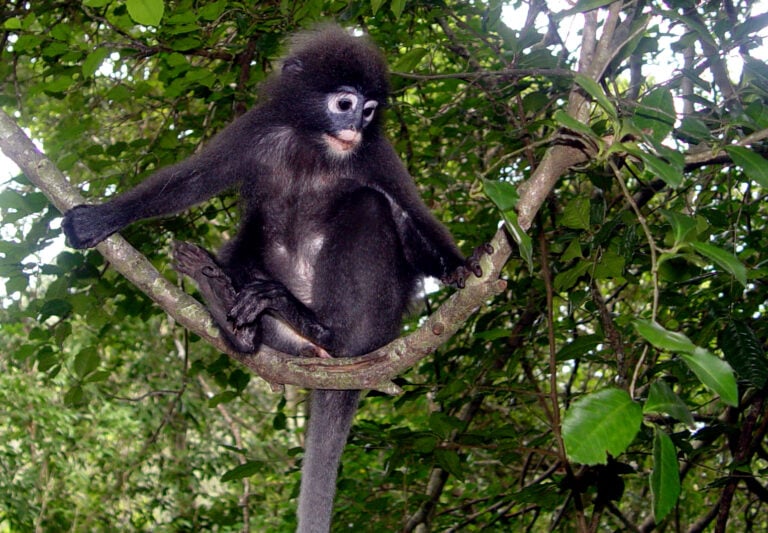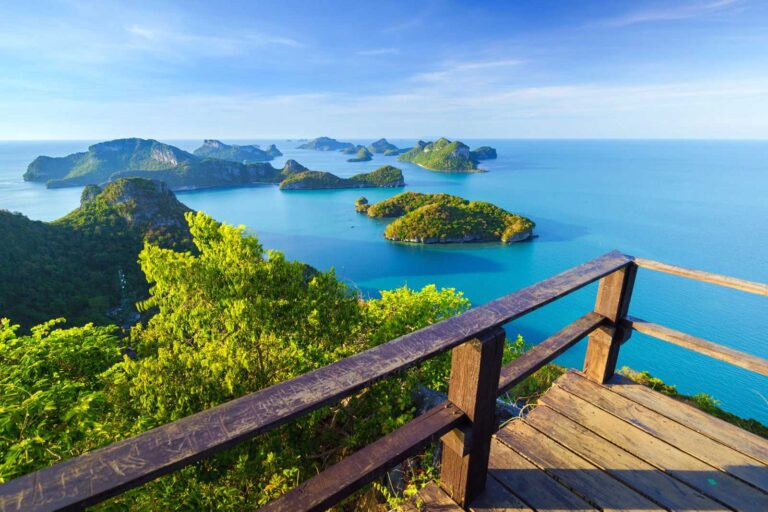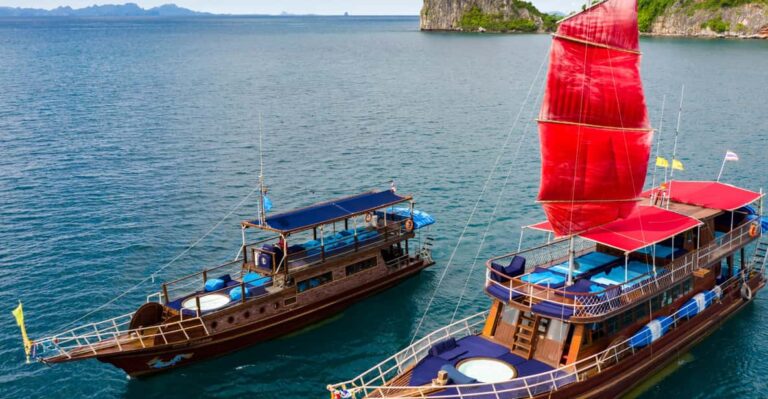Ang Thong Marine Park
Ang Thong Marine Park, a breathtaking archipelago of 42 islands in the Gulf of Thailand, is a natural treasure trove that has captured the hearts of many visitors. Spanning over 102 square kilometers, this marine paradise offers an abundance of natural beauty, diverse flora and fauna, and a myriad of activities for tourists to enjoy. In this detailed guide, we will explore the many facets of Ang Thong Marine Park, from its rich history and stunning landscapes to practical information for tourists on how to maximize their experience.
Established in 1980, Ang Thong Marine Park was created to protect the delicate ecosystems within the area, as well as preserve its cultural and historical significance. The park’s name translates to “Golden Bowl,” inspired by the many limestone islands and the surrounding turquoise waters. Many of these islands have been featured in local folklore and legends, with some believed to be the inspiration for the fictional island paradise in Alex Garland’s novel, “The Beach.”
Flora and Fauna
Ang Thong Marine Park boasts a diverse range of flora and fauna, both on land and underwater. On the islands, you’ll find lush rainforests, mangrove forests, and limestone cliffs that are home to various species of mammals, birds, reptiles, and insects. Monkeys, otters, langurs, hornbills, and sea eagles are just some of the species that can be spotted within the park.
Underwater, the park is a sanctuary for a vast array of marine life. Coral reefs, seagrass beds, and sandy seafloors provide homes for countless species of fish, mollusks, and crustaceans. Snorkelers and divers can expect to see barracudas, parrotfish, butterflyfish, sea turtles, and even the occasional whale shark.
How to Get There
To reach Ang Thong Marine Park, you’ll first need to travel to either Koh Samui or Koh Phangan, two of the most popular tourist destinations in the region. From there, you can book a day trip or an overnight excursion to the park. Several tour operators offer speedboat or traditional longtail boat services, with most trips including a tour of the park, snorkeling, and kayaking opportunities.
Where to Stay and Eat
While there are no accommodations or restaurants within the park, visitors can stay overnight at the park’s headquarters on Koh Wua Talap island, where basic bungalows and camping facilities are available. Booking in advance is highly recommended, as these facilities tend to fill up quickly during peak season. Meals can be prepared on-site or pre-ordered from the park’s headquarters, with a limited selection of Thai dishes available.
For those who prefer more comfortable accommodations and dining options, it’s best to stay on the nearby islands of Koh Samui or Koh Phangan, where a wide range of hotels, resorts, and restaurants cater to all tastes and budgets. Day trips to Ang Thong Marine Park can easily be arranged from either island.
The entrance fees are 200 Baht for foreigners (children 3-14 years pay 100 Baht) and 40 Baht (children 20 Baht) for Thai citizens.
Mu Ko Ang Thong National Park is open 8 am to 4 pm every day. The national park is closed from 20th October to 20th December every year.
Island Hopping: With 42 islands to explore, island hopping is a popular activity in Ang Thong Marine Park. Some must-visit islands include Koh Mae Ko, home to the stunning Emerald Lagoon, and Koh Wua Talap, where the park's headquarters are located.
Snorkeling and Diving: The park's crystal-clear waters provide excellent visibility for snorkeling and diving. Discover the vibrant coral reefs and encounter a plethora of marine life as you explore the underwater world of Ang Thong.
Kayaking: Paddle through the calm waters of Ang Thong Marine Park and navigate around the limestone cliffs, hidden coves, and secluded beaches. Kayaking is a great way to explore the park at your own pace and get up close with its natural beauty.
Hiking: Many of the islands within Ang Thong Marine Park offer hiking trails that lead to breathtaking viewpoints and secluded beaches. On Koh Wua Talap, the challenging hike to the viewpoint offers panoramic views of the entire park, while the easier trek on Koh Mae Ko leads to the mesmerizing Emerald Lagoon.
Bird Watching: With numerous species of birds calling the park their home, bird watching enthusiasts will be thrilled by the opportunity to spot hornbills, sea eagles, and various other species in their natural habitat.
Wildlife Spotting: Keep your eyes peeled for monkeys, otters, and langurs while exploring the park. These curious creatures can often be seen frolicking in the trees or swimming in the waters around the islands.
Bring sun protection: The tropical sun can be intense, so make sure to pack sunscreen, sunglasses, and a wide-brimmed hat to protect yourself from harmful UV rays.
Stay hydrated: Bring plenty of water or a refillable water bottle to stay hydrated throughout your visit. Some tour operators may provide water, but it's always a good idea to have your own supply.
Wear appropriate footwear: Sturdy and comfortable shoes are essential for hiking and navigating the uneven terrain on the islands.
Respect the environment: Help preserve the beauty of Ang Thong Marine Park by not littering, touching coral reefs, or disturbing wildlife. Follow the guidelines provided by your tour operator and park rangers to ensure a sustainable experience for future visitors.
Plan ahead: Ang Thong Marine Park is closed during the monsoon season (usually from November to December) for rehabilitation and maintenance. Make sure to plan your visit accordingly and check the park's official website for updates.
Ang Thong Marine Park is an ideal destination for nature lovers, adventure seekers, and marine enthusiasts. With its stunning landscapes, diverse ecosystems, and wide range of activities, it offers something for everyone, from families with children to solo travelers and couples. Whether you're seeking relaxation on pristine beaches, an adrenaline-pumping hike to a breathtaking viewpoint, or the chance to explore the vibrant underwater world, Ang Thong Marine Park is sure to leave a lasting impression on all who visit.
Sorry, no records were found. Please adjust your search criteria and try again.
Sorry, unable to load the Maps API.
